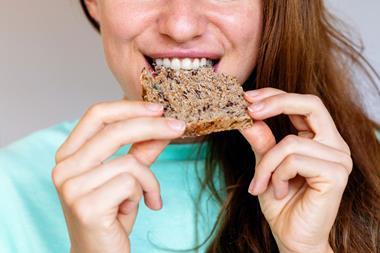Scientists this week published research claiming a single loaf produced in the UK contributes as much to global warming as more than half a kilogram (kg) of carbon dioxide. It’s a claim that has left some industry experts ‘bemused’.
Growing wheat and especially the use of fertiliser “easily accounts for the biggest slice of the bread’s environmental impact”, according to researchers from the University of Sheffield. They said ammonium nitrate fertiliser used in wheat cultivation made up 43% of the calculated warming footprint of a typical 800 gram (g) wholegrain loaf.
Researchers added there needed to be shared responsibility for the environmental costs of making bread, including fertiliser producers, farmers, millers, bakers, retailers and consumers.
Alex Waugh of the National Association of British and Irish Millers (NABIM) said the claims were “missing context”.
“There are various estimates, but overall the Carbon Trust suggests about 20% of our carbon footprint can be attributed to food. Bread will certainly have an impact, but the individual foods with the largest footprints are beef and lamb (more than 10 times that of bread), cheese, pork, poultry, farmed fish, eggs, rice, potatoes, yoghurt and milk.
“Even many vegetables have a higher carbon footprint per kg than the level attributed to bread by the researchers.”
He added: “It may be correct to say fertiliser use is the main CO2 generator in wheat growing, and consequently has a big impact on the carbon footprint of foodstuffs made from wheat, including bread; and that measures to reduce this either by increasing the efficiency of fertiliser uptake or improving wheat yields will bring about improvements.”
Dhan Bhandari at the Agriculture, Horticulture & Development Board (AHDB) agreed, and said: “We’re always very open about the contribution of agriculture to the earth’s carbon footprint.
“Our main point to make about this research is that we do all sorts of work to reduce the carbon footprint of the wheat supply chain – in 2008 there was a government target set for agriculture that we would reduce emission levels by 11%, by 2020, and that’s what we’re working towards.
“It seems a little strange that this article just focusses on bread – it needs some sort of perspective.
AHDB has in the past worked with Defra to produce a fertiliser manual for growers, and an updated version of this is due to be published in May.
There is a “very detailed” tool on the AHDB website that growers can use to calculate their carbon footprint, said Bhandari.
“We have also developed tools, and are supporting research into producing new wheats, suitable for bread-making, with a low carbon footprint. It’s not just a question of farmers nonchalantly chucking fertiliser around without a care for the environment – that is simply not the case.
“They care and so do we, and this is something we have all been working on, and will continue to work on.”
Waugh concluded: “The main point is that bread itself is a very benign food in terms of its overall carbon impact. In fact, a very good way for an individual to reduce their personal carbon footprint would be to consume more bread in place of most other foods.”
































No comments yet